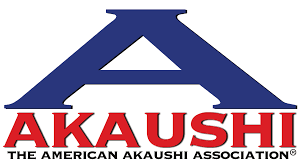Rummaging around these shelves, I unearthed an email I had once written about young calves and weaning. I blew off the extra electrons and read it carefully. Hmm, it was pretty good – a list of critical nutritional principles that apply to all calves, orphans and cow-reared.
I thought to myself, “Self, maybe someone ought to publish this.” Then I realized that indeed I could publish it – here, in this article. So here are some principles – dependable physiological notes you can use to make weaning choices about your calves.
My emphasis is on early weaning because there are times when it’s economical and because it works.
But for your information, I changed the original message a bit: I fleshed out some of the terse email sentences and eliminated the nerdish acronyms typical of emails (OTOH, 4U), but I retained the bullet points because they are easy to read. Enjoy.
- You can wean calves earlier than you think. For example, dairy calves are reared away from their dams on milk replacer and are generally weaned at under 50 days old.
Skilled calf raisers routinely wean them at under 40 days, but at that age, weaning has to be done right. Cow-reared beef calves can be weaned at less than 60 days old as long as the calves are healthy and the mothers are managed properly after weaning to reduce the risk of mastitis.
Any good beef cattle book will discuss the show-and-tell details about these procedures. My next paragraphs focus on the physiology of why it works.
- Weaning is the transition from a high-fat, high-protein, high-sugar liquid diet to a low-fat, lower-protein solid diet. Calves will do this naturally over time (their time) but, unfortunately, a calf’s natural internal calendar does not usually coincide with the profitable economics of a cattle operation. Hence my focus on pushing the system and weaning early.
- From a gastrointestinal perspective, very young calves resemble dogs and cats more closely than adult cows. The rumen of a young calf is tiny and relatively unformed, and little or no fermentation occurs in the intestine.
Young calves are effectively monogastric animals, like dogs and humans, and they need high-quality feed that can be digested without relying on fermentation – like milk.
- Milk (and milk replacer) never enters the rumen. When a calf sucks a nipple, a small flap of tissue called the esophageal groove – like a bypass valve – closes off the entry into the rumen.
Any milk traveling down the gullet bypasses the rumen and goes directly into the true stomach.
- Although milk is a great feed, cow-reared calves will naturally begin consuming significant amounts of dry feed at around 6 weeks old. Even if you see younger calves “chew” something (usually over and over and over, as young calves like to do), that amount is tiny and not biologically significant.
But after five or six weeks, the amounts get larger. Especially if the feed is a tasty high-protein grain mix or high-quality forage. Artificially reared calves will consume dry feed earlier than 6 weeks old if they are weaned earlier.
- When calves consume dry feed, this material goes directly into the rumen, where it is exposed to microbial fermentation.
- Here’s a positive feedback system: The consumption of dry feed stimulates rumen development. The fermentation of dry feed by bacteria and protozoa in the rumen, even in a small, immature rumen, results in fermentation products (primarily butyrate) that stimulate additional rumen growth and development. The more feed that enters the rumen, the more stimulation occurs.
- But – here’s an intriguing point – the rumen is actually not very important at first. A calf does not need a functioning rumen to consume and digest dry feed.
High-quality feeds are easily digested in the lower tract, and those digested nutrients will support good health and growth. If it helps, you can think of milk as a high-quality dry feed with water added. (Actually, the milk replacer powder that comes in a bag is a dry feed.) If you don’t believe me, ask yourself: Do you chew cud? If you don’t and are reading this, you are living evidence that a rumen is not necessary for the good life.
- A functioning rumen is really only necessary for a few things: fiber digestion, utilization of feedstuffs containing non-protein nitrogen (like urea), detoxifying certain harmful compounds before they travel to the small intestine and production of B vitamins.
If calves don’t need to accomplish the first three things to survive or grow, and if their high-quality feed contains ready-made B vitamins, then calves will thrive.
- Historically, many scientists focused their research on accelerating rumen development in an effort to facilitate early weaning. This is an interesting case of misplaced emphasis because a calf doesn’t need a functioning rumen for successful weaning.
The main purpose of weaning is to shift the diet from milk to solid feed. Rumens can develop quite well on their own after early weaning.
- Calves on high-quality, young pastures have access to leaves and shoots that can equal or surpass the nutritional value of standard grain-based creep feeds. Young legume plants will support the healthy growth of young calves, especially if calves have the luxury of avoiding the stems.
- Milk production peaks at eight to 10 weeks after calving. (Udder size is not a good indicator of milk production. Ask any dairyman.)
- When calves raised on their dams get older – after 50 to 60 days – they actually compete directly with their dams for feed, especially when a herd grazes high-quality pasture. Think about this for a moment.
Cows never defer good pasture to their calves. Even the best mom will not step back to allow her calf first choice of clover instead of her.
Since cows are bigger than calves, cows consume more forage than calves. If pasture is limited, like in a drought, or if you are juggling pastures in an intensive grazing system with a herd of cows and their unweaned calves, recognize that those cows will consume a high percentage of your best-quality forage.
- In late lactation (after five months), a cow-calf herd is really composed of two sub-herds with wildly different nutritional requirements: young growing calves and pregnant cows in late lactation. And if milk production is very low, those cows have much lower nutrient requirements than their calves.
If the calves and their cows are grazing together, how can a cow-calf operator meet the nutritional needs of both groups at the same time, in the same paddock? Either one group will be overfed, or the other group will be underfed.
When to wean? Decisions, decisions. But I would point out that not making a decision is still making a decision because then the cow-reared calves will continue to compete for feed with their moms, or the artificially reared calves will continue to drink expensive milk replacer. Physiology, nutrition, pastures, timing – it’s all economics. ![]()
Woody Lane is a livestock nutritionist in Roseburg, Oregon. He operates an independent consulting business and teaches workshops across the U.S. and Canada. His book, From The Feed Trough: Essays and Insights on Livestock Nutrition in a Complex World, is available by contacting the author.
PHOTO: These calves, near Basin, Wyoming, graze high-quality, young pastures that can equal or surpass the nutritional value of standard grain-based creep feeds. Photo courtesy of Lynn Jaynes.









